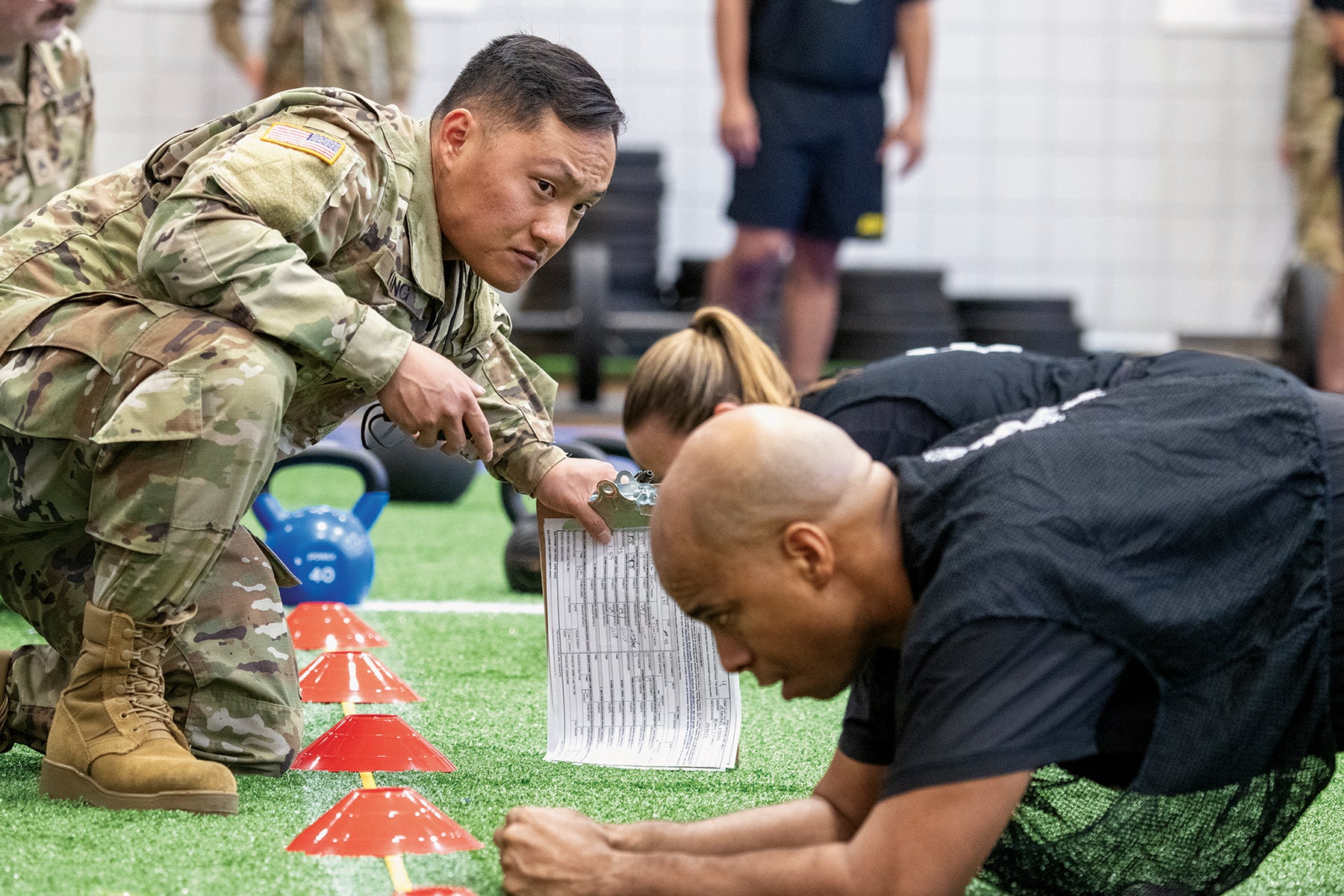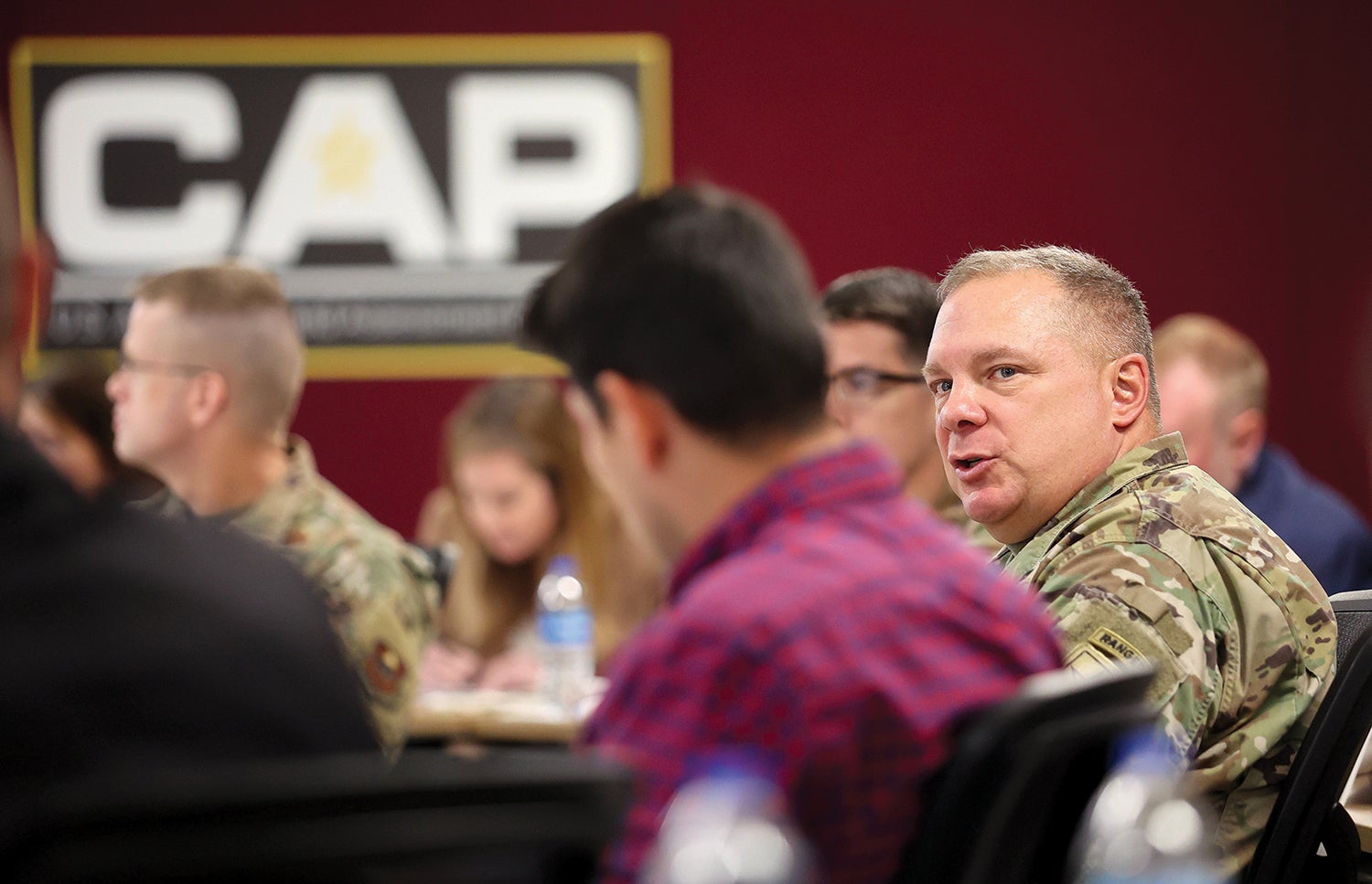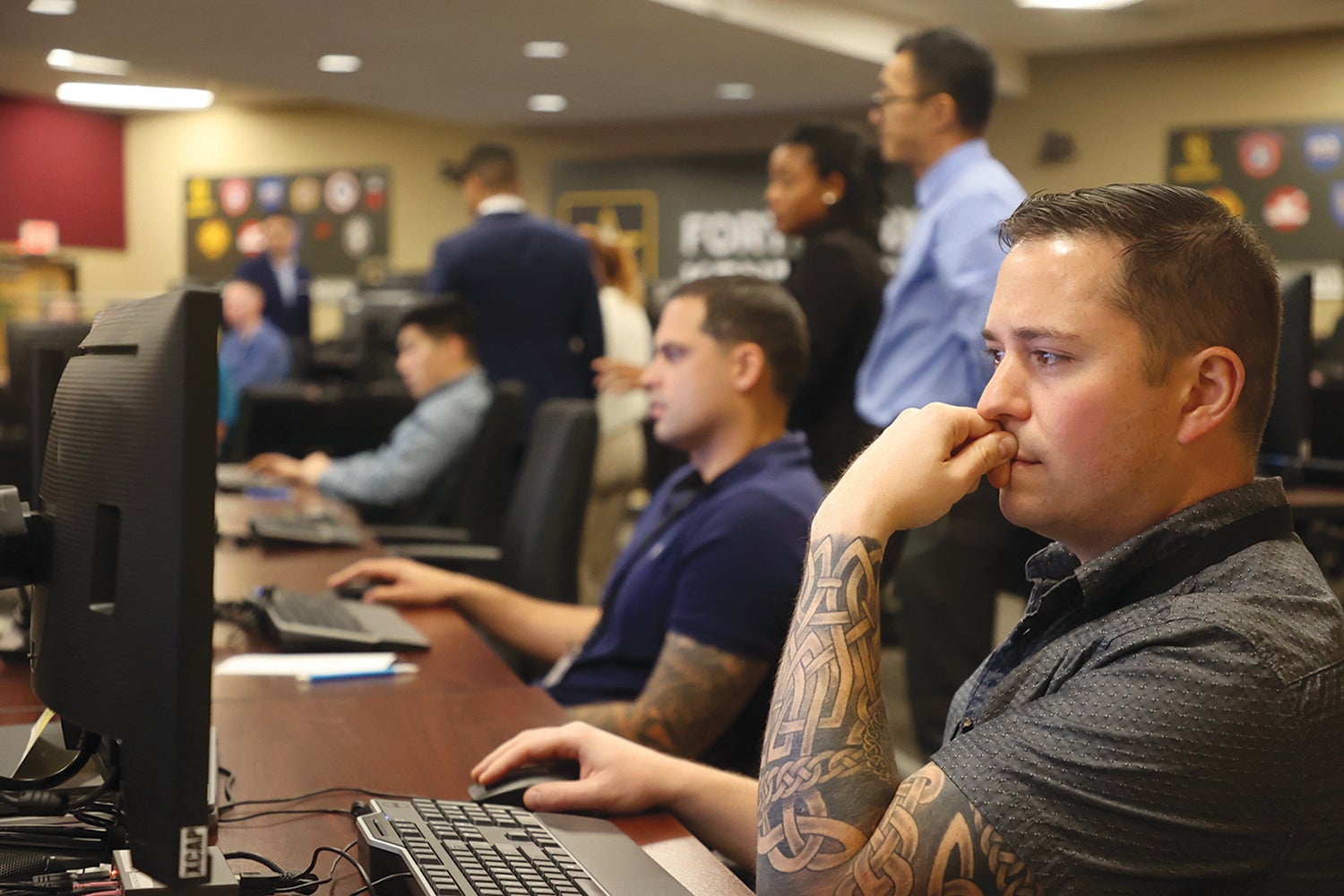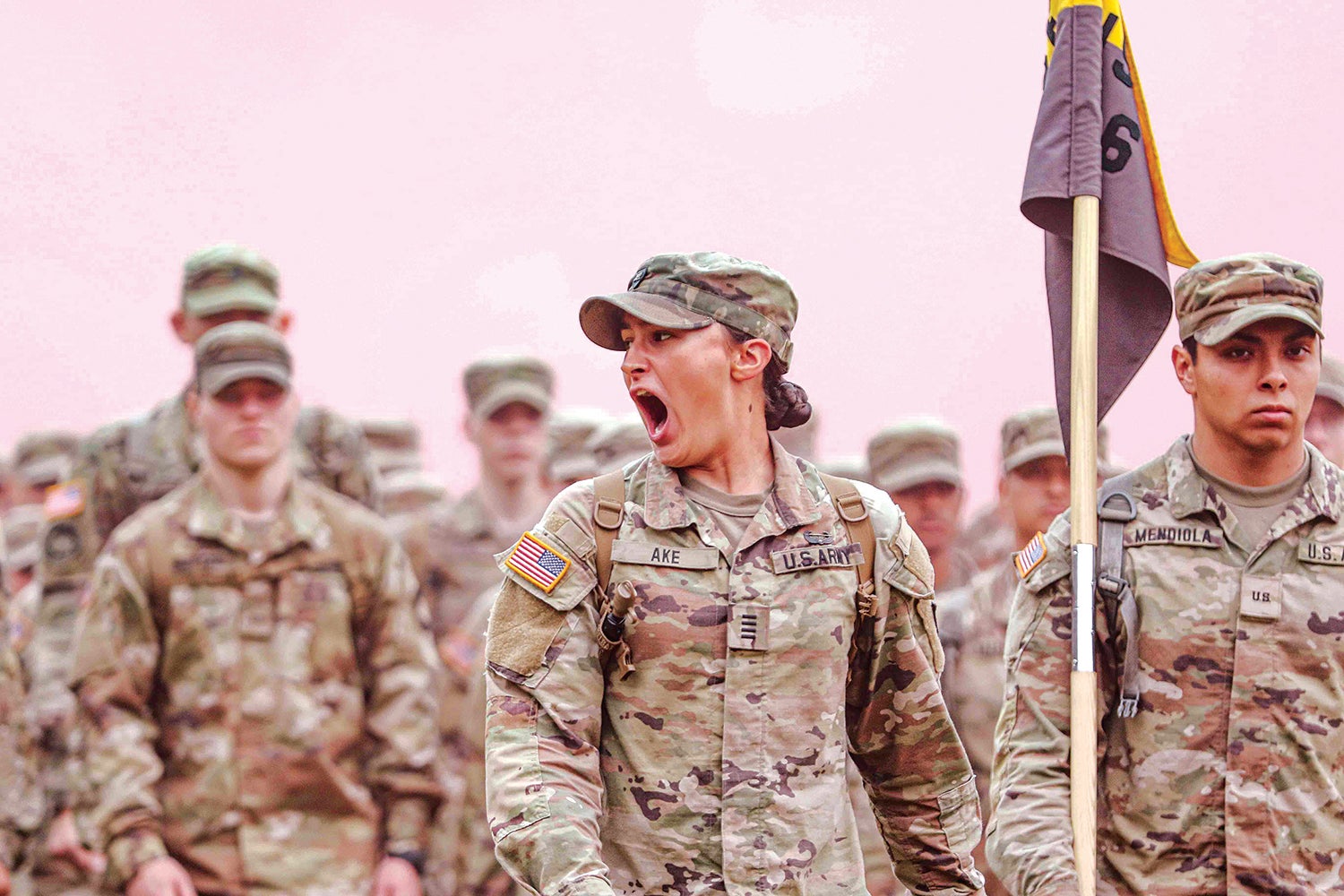Putting People (in the Right Jobs) First
Putting People (in the Right Jobs) First
Changes are coming and signature programs are set to grow as the Army’s talent management initiatives enter their fifth year.
A top priority for senior Army leaders, the service has worked to implement programs designed to better identify, manage and use the talents of soldiers and civilian employees across the force.
“The United States Army exists for one purpose, to protect the Nation by fighting and winning our Nation’s wars as a member of the Joint Force, and our readiness depends on a quality All-Volunteer Force,” Army Secretary Christine Wormuth and then-Army Chief of Staff Gen. James McConville wrote in a July 2022 message to the force. “We are in a war for talent, and it will take all our people—Soldiers across all components, Families, Army Civilians, and Soldiers for Life—to fight and win this war.”
Part of the talent war involves better managing the talent already resident in the Army, from putting the right leaders in the right jobs at the right time, to maximizing an individual’s skills and abilities.
Two signature programs in that effort are the Command Assessment Program at Fort Knox, Kentucky, and the Army Talent Alignment Process, a data-driven assignments marketplace. Since 2019, thousands of officers, civilians and senior NCOs have been selected for key battalion and brigade leadership positions through the Command Assessment Program, and thousands of officers have used the Army Talent Alignment Process to find their next jobs. Conversely, commanders across the Army have used the system, which is akin to a job marketplace, to find candidates for key positions in their formations.

More Programs Coming
While these two programs are the most visible talent management initiatives to date, there are more programs that must be prototyped, tested, piloted, scaled and implemented in coming years to continue transforming how the Army manages its massive human resources system.
The team behind this effort has been the U.S. Army Talent Management Task Force. Having reached a peak strength of about 80 uniformed members, most of the task force’s jobs are being taken over by Army civilians as the task force slowly disbands.
Launched in October 2019 when the Army People Strategy was unveiled by McConville, the task force’s mission was to help the Army transition from a legacy personnel system to an agile one that incorporates matching the right person with the right job at the right time.
As such, the task force will “sunset” through 2024, and its programs and future initiatives will be absorbed by organizations within the Army. “The task force will sunset because task forces are inherently temporary,” said retired Col. Mike Arnold, the task force’s deputy director and one of the group’s original members. “What we’re doing is, we are coming down in the number of [soldiers], and we’re raising up civilian hires.”
The task force is preparing to hand off its mission, innovations and programs to the Office of the Assistant Secretary of the Army for Manpower and Reserve Affairs, the Office of the Deputy Chief of Staff of the Army for Personnel, the U.S. Army Training and Doctrine Command, the U.S. Army Combined Arms Center and the U.S. Army Human Resources Command.
New initiatives will be planned, and, with the benefit of time, the long-term performance of current programs can be assessed, modified and adapted as needed.
“There are a lot of things in talent management that have been successful; some of them are still a little bit under the radar,” said Col. Bob O’Brien, an original member of the task force who directs the Command Assessment Program.
He pointed to the program he leads, known as the CAP, and the Army Talent Alignment Process, known as ATAP or the talent marketplace, as the task force’s two signature efforts. O’Brien noted there also is “a lot going on in the background that is enabling us to do things over time.”

Improved Techniques
Now entering its fifth year, CAP conducts one assessment cycle each year from late September through early November.
In November 2022, the Army completed the fourth iteration of CAP, and over those four cycles, more than 5,200 leaders at the lieutenant colonel, colonel and sergeant major levels were assessed for battalion and brigade command, key staff positions and senior NCO jobs at the command level, Lt. Gen. Douglas Stitt, deputy Army chief of staff for personnel, said in a Sept. 20 statement as he testified before the House Armed Services Committee subcommittee on military personnel.
Also assessed were high-level civilians vying for acquisition corps positions.
By the end of the fifth cycle in 2023, more than 2,000 more candidates had competed for positions at the battalion and brigade levels and for high-level civilian and officer acquisition corps jobs, medical command leadership positions and division- and colonel-level chaplaincy positions at three- and four-star headquarters, O’Brien said.
Off-cycle assessments also are conducted, such as the one in September 2022 that assessed candidates competing to become the 17th sergeant major of the Army. It was the first of its kind to select the Army’s top enlisted leader, O’Brien said.
Four-day CAP cycles at Fort Knox are tailored for each cohort and could include writing, psychological and cognitive evaluations, the Army Combat Fitness Test, height and weight measurements, peer subassessments, observed behavior through a leader reaction exercise, psychological and double-blind interviews and a panel session known as the Army Comprehensive Talent Interview.
CAP’s organic team is about 30 people, but during an assessment cycle, that number swells to about 485, O’Brien said. The team includes “the largest gathering of psychologists in the Army” and general officers, colonels and senior NCOs who conduct interviews and are voting panel members.

Focus on Performance
As CAP has continued, its techniques have improved with more precise feedback mechanisms, confirmation bias training for cadre, a civilian-military CAP planning group augmented by the Command Assessment Program Directorate at the Center for Army Leadership at Fort Leavenworth, Kansas, and “life support and sponsor” capabilities, O’Brien said.
For example, candidates now have a team that helps them get where they need to be, wearing the right uniform and carrying the right equipment, so “all they have to worry about is their performance,” O’Brien said.
Further enhancing CAP will be a purpose-built campus to be constructed in coming years, O’Brien said. “Our goal is to reduce the tasking requirements to the Army to the minimum necessary, and to make things very efficient as we assess candidates for these jobs but keep the high level of professionalism that has become a hallmark of our reputation,” he said.
O’Brien, who was there in January 2020 when the first candidates for battalion command were assessed, said the CAP team is “now at the point where our very first candidates from [battalion] CAP are beginning to come back as candidates for [brigade] CAP.”
As a young program, long-term success is tough to measure, O’Brien said. The team is “keeping an eye on how people are doing in command” to observe any measurable changes in their assessments and see “if there are things we can tease out to help us measure longitudinal success,” he explained.
The biggest change on the horizon for the talent marketplace is its migration to the Integrated Pay and Personnel System-Army (IPPS-A) platform. The program is an electronic, data-driven system that brings personnel, pay and talent management information into one place. IPPS-A is being released incrementally for soldiers in all three components.
“For the end user, it will be invisible,” Arnold said of the migration. “It will be the same landing page. It will look the same, but the analytics and the user interface behind it will be much more robust.”

Cultural Shift
In the meantime, the talent marketplace, which was launched in 2019, is in full operational mode and is being used in two three-month cycles for winter and summer moves by individuals eligible for a new job and commands looking to hire people for vacated and validated positions.
The system is a decentralized, commercial-style website that aligns officers with jobs based on the candidate’s self-identified knowledge, skills, behaviors and preferences—information that is not typically found in an officer record brief.
“It’s a cultural shift for the Army,” Arnold said. “No longer is your assignment manager going to say, ‘Hey, I’ve got two or three options, where do you want to go?’ ”
Every available job is visible to every officer, from captain to colonel. Likewise, every officer is visible to commands with jobs to fill. What makes a difference is the hidden talents profile.
Col. Steve Gventer, the talent management task force’s chief of staff, has used the system as an applicant and a commander. As a brigade commander, he was able to see applicants with the skills he needed and whittle down his top candidates.
“It allows a commander and the command team to see files, just like it allows the applicants to look at it and say, ‘I want to go to that brigade or that battalion or that location,’ and then you do an interview,” Gventer said. “We run into some hiccups on being able to query and identify, but if I get 30 people and can read their files and can cut it down to five interviews, it’s a pretty good system for changing the culture.”
While there are constant refinements to current programs, the Talent Management Task Force is exploring ideas that could turn into new initiatives or programs. Some offer incentives to help the Army’s junior officers think about their long-term goals earlier in their careers.
One of those is a career mapping pilot that was introduced in 2020 at Fort Lee, Virginia, now known as Fort Gregg-Adams, with the Army’s logistics branch among lieutenants and captains in the Captains Career Course “to give them a better look at all their career opportunities [several] years into the future, two or three assignments out,” Arnold said.
Until now, he said, junior officers have had no formal career mapping guidance so early, except with “a really involved commander” who might help a young officer visualize their future.
Innovative Incentives
Also being piloted is a set of programs designed to “attract young officers before their active-duty obligation expires,” with innovative incentives tied to committing to another year beyond their original obligation, Arnold said. Proposed incentives include geographical stability, which would permit an officer to stay in a region longer or leave sooner, a 90-day sabbatical with full pay and location preference.
Another pilot aims to place first sergeants in positions within a division using self-assessments by senior NCOs that outline their knowledge, skills, behaviors and preferences, and match them with the right position. Called the First Sergeant Talent Alignment Assessment, it was piloted in 2020 with the XVIII Airborne Corps at Fort Bragg, North Carolina, now known as Fort Liberty.
It is currently being piloted at the 25th Infantry Division at Fort Shafter, Hawaii, among other units, Arnold said.
The Army’s overhaul of personnel management, he said, “is the most significant modernization in the way we manage people since World War II” and a substantial change “that requires long-term vision.”

